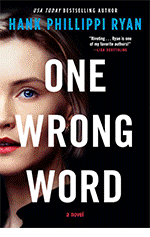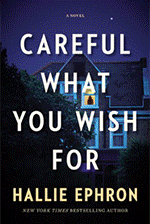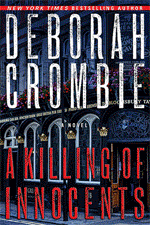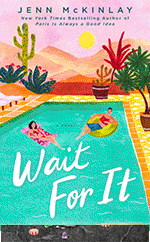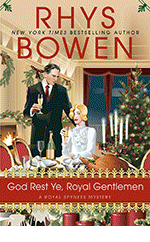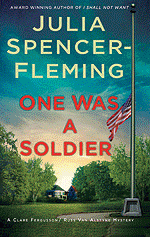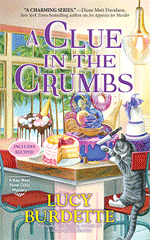LUCY BURDETTE: I know some of you, Debs in particular, are big fans of audiobooks. John is too, he always has his EarPods in listening to something. Usually when I’m out walking, I prefer to be looking around at the world or trying to come up with plot ideas. One time I do listen is when I’m trying to get to sleep. This is very particular, though. The story has to be something that I’m already familiar with so I’m not worried about keeping up with what will happen. One of my favorites is Jenny Colgan, especially The Endless Beach or others in her Mure series. Since I love those, I bought two other titles when I saw them on sale. But oh horror of horrors, it was a different narrator—one that I did not feel the least bit soothing. I tried listening a little more while I was walking to see if I could get used to her voice, but it was like nails on chalkboard.
So that’s the question of the day. If you listen to audiobooks, how important is the narrator, and when do you most enjoy listening? And one more question, do you like the narrator acting out the voices or would you prefer they just read the darn book? (I guess you can tell what side I’m on!)
HALLIE EPHRON: I’m not (is it anathema to say this?) a huge fan of audio books or of narrators who get into all the voices. Plus I fall asleep and then have no idea where I tuned out when I restart the thing.
HANK PHILLIPPI RYAN: Yeah, um, oops. Well, I cannot listen to them. I HAVE listened to mine, although I have to say it’s really difficult to listen to one’s own audiobooks for a million reasons, but I adore my actors and am happy with the terrific response to them. The actor who reads ALL THIS, Sarah Mollo-Christensen, is incredible, and shows how a good reader can make a book fully realized.
But me, listening to an audiobook? Is me, sleeping. Boom, done, I am out. (I think it has something to do with not knowing where to look.)
If I try to do something else while I’m listening, I cannot do either thing, god forbid I should drive, which would be deadly.
I’ve just downloaded one now, though, because someone told me it was unmissably fabulous, so we shall see.
Adding this later: wow. This is interesting. The book I am “hearing” is great--but I can sort of tell that if I would have been reading it on paper, I would have thought: ”backstory backstory get on with it” but because I am hearing it, it’s like someone telling me a story, and that’s fine. Whoa.
JULIA SPENCER-FLEMING: I’ve adored audiobooks ever since they were cassette tapes in HUGE boxes. The audiobooks of the Harry Potter series and novels like The Wizard of Oz and The Boxcar Children made many a long, long car trip bearable when my kids were small.
I tend to lean more to nonfiction for my audiobooks, interestingly. Right now I’m listening to Becca Syme’s ENERGY MANAGMENT FOR WRITERS. Next up will be 1929: Inside the Greatest Crash in Wall Street History by Andrew Ross Sorkin.
I’m going to give a shoutout to the reader who performs my audio books, Suzanne Toren. She is SO good, and I can’t tell you how many readers love her. I’ve listen to her narration for other books as well, and she always knocks it out of the park. The performer/reader/narrator is SO important to the enjoyment of the book!
JENN MCKINLAY: Like Julia, I’ve been a listener since the old “books on tape” days. I used to listen during my commute in CT and now I listen at the gym, while gardening, etc. My latest love is the graphic audio books where they have multiple narrators and sound effects! I listened to all of Sarah J Maas’s ACOTAR and Rebecca Yarros’s Fourth Wing on audio — so good!
DEBORAH CROMBIE: Well, obviously, I am a fan. I did start with the books on cassettes, how many ever years ago, then CDs, but that was mostly in the car on long trips. (I can't listen to audio books while driving in Dallas traffic.) But the digital audio books were revolutionary. I think my gateway books were the Harry Potters, read by the marvelous Jim Dale, because I knew the stories and didn't have to worry if I didn't understand or was missing something. (The new full cast audio of Harry Potter and the Sorcerer's Stone is really good and is unabridged, but I think I prefer one narrator.) I do like readers who do different accents and character voices!
Lucy and Hank, I listen while I am cooking (as long as not following complicated recipe!), washing dishes, doing mindless chores like watering and cleaning out catboxes, and I do listen in bed at night. I just set the Audible timer on my phone, so if I fall asleep I only have to back up a bit the next day.
RHYS BOWEN: there was a huge upheaval in my world when the narrator for the Royal Spyness series died. Not only because she was so young and it was so unexpected but because she was so talented. She was nominated for an Audie award every year and one year she won, beating out Meryl Streep. So the fans had a hard time accepting a new narrator, who was quite good. But this time she was nowhere to be found so I had to choose yet another new narrator. Luckily the actor who has done the Molly series was available so all is well. But the narrator makes a huge difference. A grating or inappropriate voice and the book is ruined!
Red readers, are you audiobook fans? How important is the narrator?





















.png)
.png)









.jpg)


.jpg)





